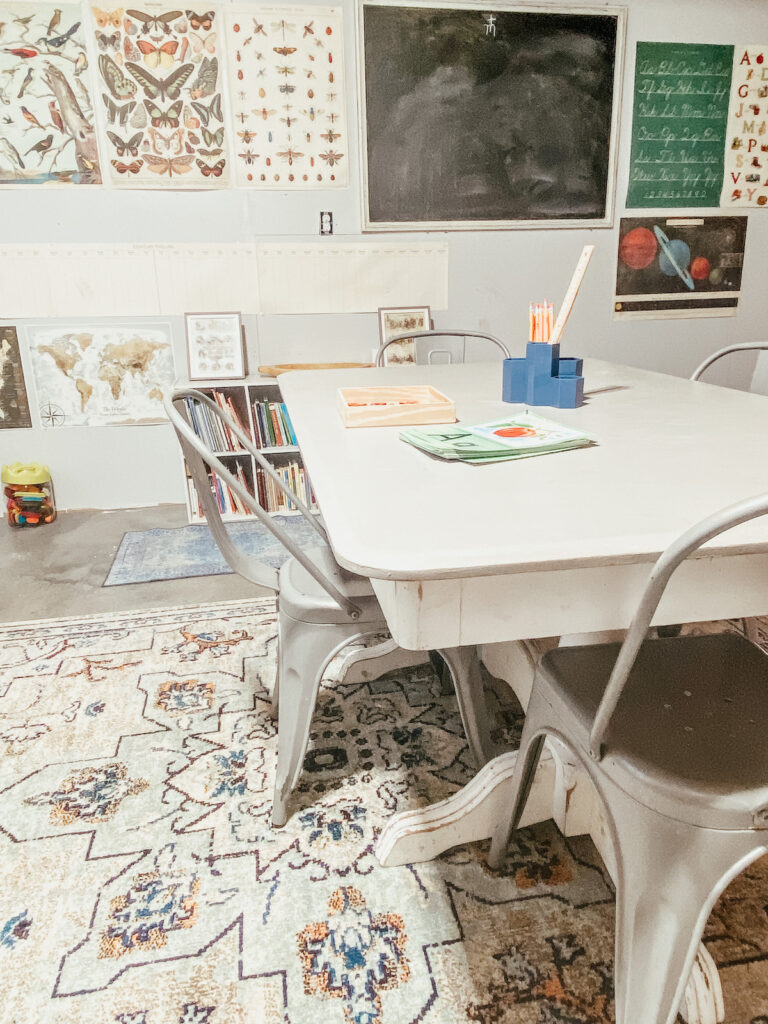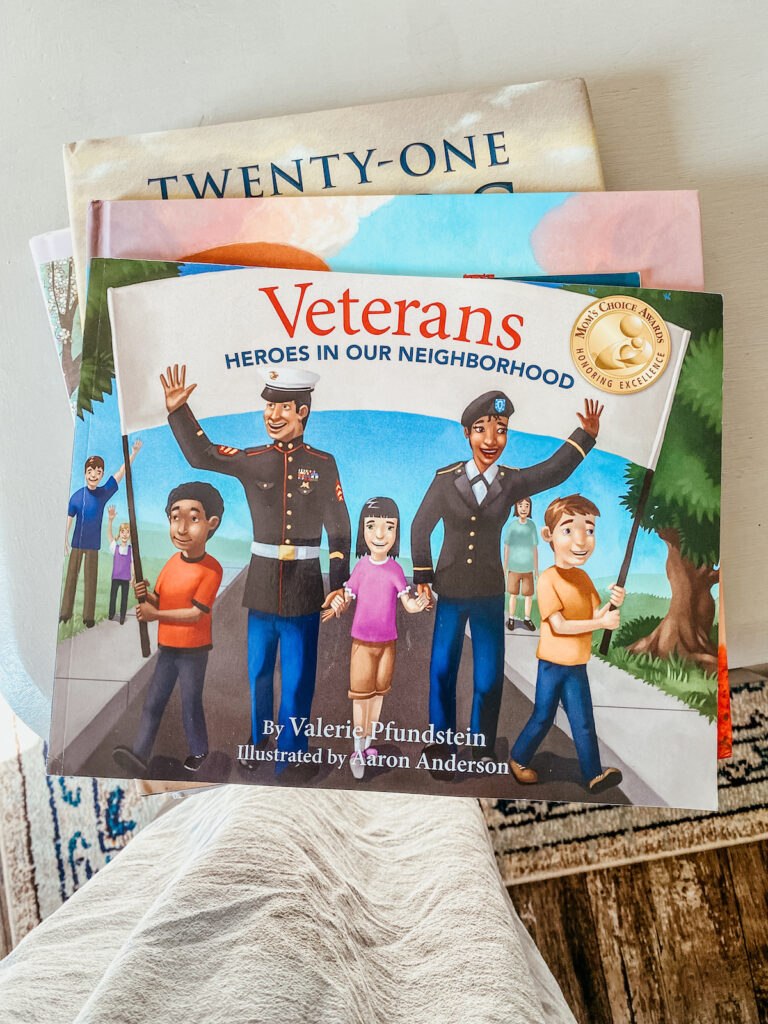Disclosure: Joyfully Domestic may earn a commission for purchases made after clicking links on this page. View our disclosure policy for details.
Planning out the homeschool day looks a little bit different to each of us. Whether you prefer routines or strict schedules, creating a homeschool schedule that works for you can take a little planning and trial.
But with a few of these tips and tricks, you’ll get your daily homeschool schedule on track.

Creating a homeschool schedule
Homeschooling brings up images of cozy read alouds with your children gathered close, fun art projects around the kitchen table, and the opportunity to make lasting memories as a family.
These are definitely moments homeschooling families enjoy, but sometimes the reality of homeschooling can also include scrambling to get lessons done. So that you can make it to ball practice on time. Or frozen pizza again for dinner because a dentist appointment pushed school too late into the evening.
Sometimes, homeschooling can look like a frazzled parent at the end of the day wondering how in the world they worked so hard and got so little accomplished.
The reality is that homeschooling is the act of taking a huge task that most families outsource (to a school) and bringing it crashing into the rest of your family life.
How can this even work? How can you manage all of the educational tasks and responsibilities while also seeing to the rest of your life?
Where do you fit in the cooking, cleaning, appointments, self-care time, fun time, and all the rest? What about field trips? How does a homeschool mom (or dad) balance it all?
The only way that this can work and leave you with your sanity at the end of the day is to establish a workable schedule early on that flows with your life. Let’s look at a few ways you create a homeschool schedule that serves your homeschool well.
Schedules VS Routines
There are some personality types that immediately balk at the word schedule, while other personalities crave schedules. The first step in organizing your homeschool time around the rest of your life will be to identify which type of personality you are.
A daily schedule is usually defined as a written plan in which certain tasks are done at a specific time, no matter what. A conventional private or public school will keep a schedule. School bells determine when classes change. Everyone does the same thing at the same time every day.
Schedules can be helpful in order to make sure that homeschooling time does not flex over into other areas of life and it can help ensure that tasks get done in a timely way every day.
The downfall of the schedule is that life does not always happen on a schedule. Emergencies happen, things change, needs change.
If you are too attached to your schedule, you may start to feel stressed out when things aren’t going according to schedule.

A routine is often much more flexible than a schedule. With a routine, you have a general time of day set aside for certain tasks, but it’s okay if those tasks take a little longer. If you finish something early, you can jump on to the next task regardless of what time it is.
If you want to skip things one day and catch them up the next day, that is okay too. Routines allow more flexibility with homeschooling so that the family can complete tasks with a more relaxed mindset.
Routines are helpful because they are not as demanding as a schedule. Each day you can customize the routine for the needs of that day. The downfall of a routine is that there can definitely be a temptation to let things slide or get lazy.
If you use a routine, you and your children need to practice self-discipline to make sure you are getting the appropriate amount of tasks done each day.
Evaluate the tasks
Whether you decide to use a strict weekly schedule or a more relaxed routine, the first step in organizing your homeschool time will be to evaluate the tasks that need to be done each day.
These tasks will include learning tasks and home tasks. Because you are homeschooling, it is important to keep both sets of tasks in mind. Weaving them into the daily schedule/routine will help you not feel too overwhelmed.
Make a list of everything that realistically needs to be done each day. If possible, create this list with priorities in mind. The most important priorities will go at the top of the list and then list things in descending order according to their importance.
This means that the tasks near the top will be a high priority.
Evaluate timing
Next, you will want to evaluate what time of the day will be best for certain tasks. You will need to take into consideration how you and your children function each day. Are you at your best first thing in the morning? If so, you may want to plan to do the most difficult school work then.
Do your kids slug through the mornings, but liven up later in the day? If that’s the case, you will want to plan more difficult schoolwork later. You know your kids best. Use these natural rhythms to plan educational tasks during the best times.
Get creative
One of the biggest mistakes that homeschooling parents make when they are first starting out, is thinking that their homeschool has to look like a regular school or like someone else’s homeschool. If your family needs to do school at night, then do school at night.
If your family needs to run only a three or four-day homeschool week and devote those other days to other things, go for it. You have the freedom to be creative with your schedule/routine. Need to do school on Saturday and take Mondays off? You can do that.
The beauty of homeschooling is that you, and you alone, have the power to create your family’s learning environment and system.
It may feel difficult at first to get that “school” image out of your head of classrooms and school bells, but if that model of education does not work for your family, then ditch it. Create your own model of education.

Sample homeschool schedule
Here is a sample of how our typical homeschool day looks. Personally, I would rather run on a specific type of schedule. But my family just doesn’t operate this way.
After testing different schedules, I’ve had to practice a lot of flexibility. And a regular homeschool routine seems to work best for our family.
- 5:00 am – mom wake up & morning devotions
- 5:30 am – get ready for the day. The children usually wake up on their own between now & 6
- 6:00 am – begin making breakfast for the family, eat together, and cleanup
- 7:00 am – kids get dressed, make beds, short chore time, and we usually take care of homestead chores here too – feed & water animals, gardening, etc. Sometimes we will take a short nature walk during this time too.
- 9:00 am – morning time – devotions & prayers, and then we rotate through bible reading, catechism, poetry, literature, music study, picture study, and the arts
- 10:00 am – short break for snacks, start laundry, and short cleaning task for mom
- 10:30 am – we begin lessons and subject areas broken down by grade level – language arts, math lessons, social studies, science, health, and nature study. The older children are able to work independently so that I can focus on the young children. Sometimes we are able to be finished with lessons by 12:30 pm when we break for lunch.
- 12:30 – lunch & cleanup, free time, dinner prep
- 2:00 pm – wrap up any unfinished work, music lessons & practice
I really try hard to keep a balanced routine and simple homeschool schedule in our homeschool year plans.
Remember you’re in control
Regardless of what type of schedule or routine you establish, remember that you are the boss, not the schedule, not the routine.
If at any time, you realize that the schedule or routine is not serving you anymore, then you have the power to change it. Don’t force a schedule or routine that is stressing your family out and taking away from the learning experience.
Conclusion
Establishing a schedule or routine is essential to homeschool management. However, the schedule or the routine is there to serve you, not the other way around.
With a little bit of homeschool planning, you can determine your routines. And how much time each task takes.
By evaluating your tasks, timing, and prioritizing what’s important, you can create an educational model that suits your individual family and your individual time needs.






Great suggestions! Thanks for sharing. I love your clear book bins, where did you get those?
Thank you! They are from the Container Store. Those in the blog post are either the large or extra large…I can’t remember! I have most of all of the sizes, I think? https://www.containerstore.com/s/multi_purpose-bins/d?q=clear%20bins&productId=10022942